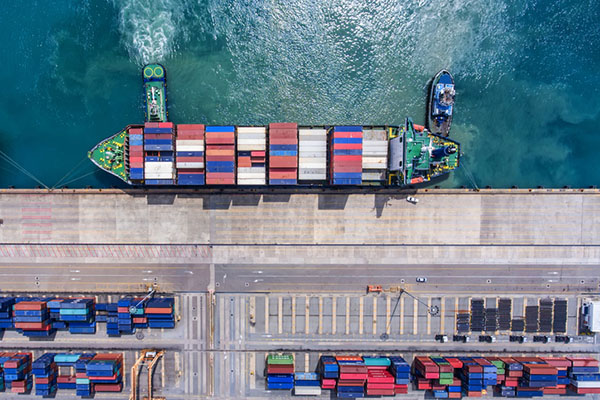Unpredictable trade environment puts focus on shippers to be efficient and diligent
The trade war, in a sense, has become an extension of an ongoing “quest” for shippers to truly be ready for anything.

As the tension, or more appropriately, the trade war between the United States and China continues to show no sign of slowing down, given how plans and policies are able to take shape, or rapidly change, in the amount of time it takes President Trump to fire off a Tweet, it stands to reason that this ongoing dilemma has not made things easy for shippers, not in the very least.
That said, now more than ever, shippers need to simultaneously be many things—including prepared, alert, adaptable, flexible, and innovative, among others—in order to stay on top of, and in front of, any and all trade war –related surprises that may cross their paths, at any time.
In recent discussions with various supply chain stakeholders, the trade war, in a sense, has become an extension of an ongoing “quest” for shippers to truly be ready for anything.
Ted Stank, professor of supply chain and logistics at the University of Tennessee's online Masters of Supply Chain Management program, explained that a big part of shippers being prepared goes back to having what he called a very aggressive and active risk management profiling process in their supply chain, given the many things that can disrupt global supply chains.
Stank said lessons from past disruptions, including the tragic events of September 11, 2001, and the Icelandic volcanoes in 2010, among other events, “come with risks that could disrupt and ripple into your supply chain at a huge cost,” adding that ”this disruption of tariffs is the most recent example of this global disruptions.”
What’s more, Stank pointed out that one approach shippers should take is the traditional way of dealing with risk and uncertainty by building inventory levels. And he added that with exchange rate fluctuations, coupled with the possibility of additional costs from tariffs, shippers are likely to stockpile products when they are cheaper in the hope that they can still be sold in the future.
“There is some danger in that, but, in the short term, it is a philosophy that makes sense,” he said.
As for other options shippers can take to counter the tariff impact, Stank cited procurement staffers looking for alternative sources of supply to ride out the trade war. This includes locales like Malaysia, Indonesia, India, and Vietnam. But while they may present interim options, they lack the sophisticated transportation and logistics infrastructure China has, which make it relatively easy and commonplace to move things into and out of China, whereas other regions are not prepared to handle that kind of volume or the handling fees.
Another stakeholder echoed some of Stank’s themes, mixed in with some different focus areas, too.
“The one thing we know for certain is that nothing is ever certain (except death and taxes). We live in a world that is constantly changing,” said Kristen Jordeth, Director, North America Strategy, Intelligent Spend Management, SAP Ariba and SAP Fieldglass. “Today’s businesses absolutely must follow trends in order to stay relevant. This is just as true for shippers as it is for any business. New tariffs cause businesses to rethink the way products are engineered, how suppliers in various countries are managed, and possible modes of transportation between countries to reduce tariffs. Many large shippers have already started moving production out of China due to the rising wages and increasing regulations.”
Jordeth added that shippers need to build strong relationships with their suppliers today to ensure they meet the needs of tomorrow.
One key way for shippers to address this, she said, is by having systems in place to locate similar suppliers who can meet their needs in new locations, but more importantly ensure the suppliers they choose do not pose risk.
“Increased visibility will allow shippers to better structure their business and minimize the disruption when the tariffs come into effect in September,” she added.
In today’s uncertain times, shippers can benefit from best practices, preparedness, and diligence to stay in front of the threats tariffs pose. While this is clearly easier said than done, steps suggested by Stank and Jordeth can go far in helping shippers stay one step ahead.

Article Topics
Latest in Logistics
Senators take a close look at Amazon with Warehouse Worker Protection Act Despite American political environment, global geopolitical risks could be easing Maryland DOT: $1.9 billion and up to four years to rebuild bridge sunk near Baltimore port April Services PMI contracts after 15 months of growth, reports ISM 2023 industrial big-box leasing activity heads down but remains on a steady path, notes CBRE report Comau’s Advanced Solutions Drive The Benefits Of Automation For Diversified Industries U.S. rail carload and intermodal volumes are mixed in April, reports AAR More LogisticsAbout the Author
Subscribe to Logistics Management Magazine

Find out what the world's most innovative companies are doing to improve productivity in their plants and distribution centers.
Start your FREE subscription today.
May 2024 Logistics Management

Latest Resources














